World war and espionage Cold War story
Actions of former Chief of 2nd Czechoslovak Paradesant Brigade Staff
HLASNY KAREL, born on October 22, 1911 in Bludov, district Sumperk, Czechoslovakia; died on November 20, 1982 in Monterey, California.
Last occupation, before communist persecution (December 13, 1947);
Chief of Staff of the 1st Armored Division in Prague with the rank of Gen Staff Lt/ Colonel- Czechoslovak Military Forces.
In memoriam, rehabilitated and pointed to the rank of Colonel (April 22, 1991).
Ex-servisman, British Military Identity Card No. D-06229 (Allied).
Member of the Returned Sailors´ Soldiers´ and Airmen´s Imperial League of Australia.
Military Experience
- His basic training and experiences was with the Artillery (either motorised or mounted).
- In addition to this he have had experience with and knowledge of the organization, training, commanding and combat functioning of larger airbone units. This includes the „partizan“ system of fighting, as well.
- Command of various staffs (Infantry division, Airborne division and Armored division).
- He could drive motor vehicles of all categories and was trained in military transport methods with regard to the construction and the maintenance of motor vehicles.
- As a Regular Army Officer of the Mounted Artillery (before World War II) he was for many yers a gentleman-rider at races and an acquainted with the training and breeding of horses.
EDUCATION
- 1917 - 1922; Primary School in Bludov
- 1922 - 1929; High School in Sumperk (Diploma dated June 10, 1929)
- 1931 - 1932; University in Prague, Section for Financial Science and Accountancy
- (Certificate of Examination, dated July 21, 1932)
SPECIAL MILITARY Education
- aa/ In Czechosloakia before the WW II;
- 1929 - 1930; School for Artillery Officers of the Reserve

Picture 01: Czechoslovakia, Bratislava, 1929 - 1930;
Young soldier Karel Hlasny; School for Artillery Officers of the Reserve in Bratislava
1932 - 1934; Military Academy for Artillery Officers of the Regular Army

Picture 02: Czechoslovakia, Military Academy for Artillery Officers in Hranice, May 1934;
Student Karel Hlasny (right) before „Military Horse-Race“
1935 - 1936; Postgraduate School for Artillery Officers
1938 – 1939; Military Technical School (for motorized troops)
bb/ Abroad during the war;
1942 - 1943; Polish War College in Great Britain (Peebles, Scotland)
cc/ In Czechoslovakia after war;
1945 - 1946; War College in Prague for General Staff Officers
ACTIVITY
1929 – 1931; Compulsory Military Service with Mounted Artillery
1931 – 1932; Accountant for Bohemian National Administration in Prague
1934- 1939; Regular Army Officer with Artillery Rgt. No 109 in Bratislava

Picture 03: Czechoslovakia, Bratislava, July 1934; Second Lieutnant Karel Hlasny after graduation at Military Academy for Artillery Officers, with some friends and Karel´s older brother Tonik (far right)

Picture 04: Czechoslovakia, Bratislava, 1937;
Lieutnant Karel Hlasny
NOTE to the Picture 4; There Karel Hlasny served as regular Army Officer with Artillery Rgt. No 109 in Bratislava (1934-1939).

Picture 05: Czechoslovakia, Luhacovice Spa, 1938;
Lieutnant Karel Hlasny (left) and another officer
1939;
Member of the Czechoslovak Underground Organization for the Liberation of Czechoslovakia (Prague)
1939 1940;
In the early days of December 1939, he fled from Czechoslovakia and joined the Czechoslovak Army recently formed in France, where he was appointed Commanding Officer of Mounted Artillery Battery (Attestation d´identite issued on April 12, 1940).
1940- 1943;
After the Capitulation of France their forces were evacuated to England which he reached on July 7, 1940 . In England he was was in the Military Service with the Czechoslovak Armored Brigade with the rank of Captain. He was selected by the Czechoslovak Ministry of Defense in Exile to attend the Polish War College in Peebles (Scotland), and there finally trained as „paraschutist“. When he left the Polish War College , he was transferred by the Czechoslovak Ministry in London to the Czechoslovak Military Forces operating in Russia.
In Britain there was a surpluss of officers, while at the Russian Front they were in great demand. The trip from England to Russia took almost three months with many inconveniences in the travel schedule.
The transport consisted of 26 officers and a lot of luggage. They traveled by ship to Egypt, where they stayed a few days in Cairo.. They continued on to Damascus and then by a broken-down bus through the desert to Baghdad. Finally, the travelers arrieved in Teheran, Iran. By that time, their entry visas to the Soviet Union had expired. It tooks three weeks to get the needed extensions. Once free to go, an airplane took 26 Czechoslovak Oficcers from Teheran to Moscow, but not directly, attending to many stops and delayes. They reached the Russian territory on November 11, 1943. There, firstly, Captain of artillery Karel Hlasny participated in the 1st Czechoslovak independent field Battalion in Buzuluk as commander of infantry, trained supplemental company- to the end of 1943.

Picture 06: England, December 1940;
Postcard of Czechoslovak Artillery in England

Picture 07: England, Cholmondeley,1941
Captain Karel Hlasny (far right) with other Czechoslovak officers
NOTE to the Picture 06 and 07; The Czechoslovak forces were evacuated from France to England. They sailed (by ship Vice Roy of India) through Giblartar and reached Liverpool, England on July 7, 1940. Captain Karel Hlasny served with the Czechoslovak Armored Brigade with its artillery detachment. In England, the Czech forces participated in the „Battle of Britain“
1943 – 1945;
On January 9, 1944 started an organization of 2nd Czechoslovak Paradesant Brigade in Yefremov (Russia), largely made up of these Slovak deserters. There Captain Karel Hlasny was in charge of G-3 section for Military Training and Operations of this paradesant brigade (Chief of Brigade Operating Section), with about 2,800 paraschutists. Other trainink place of paradesants was in Proskurov (from May 17, 1944). This town (now known as Kmelnickij) is located on the Southern Bug River and about 340km from the Ukrainian capital, Kiev. There he was appointed Chief of Staff of this Brigade with the rank of Staff Captain. From September 6, 1944, paradesant brigade leaved Przemysl, and moved (walking!) to Poland- Krosno area, there participated in Karpathia- Dukla operation (Dukla Pass). After hard fighting in the Carpathian foothills, 2nd Czechoslovak Paradesant Brigade was airborned behind the enemy lines to strengthen the insurrection in Slovakia. There paradesant brigade operated about Slovak National Uprising for over 6 months, Staff Captain Karel Hlasny was wounted twice, during this „Slovak Battle“.

Picture 08: Russia, Yefremov, January- April 1944;
NOTE to the Picture 08 - 11; Training took place with the 2nd Czechoslovak Paradesant Brigade inYefremov (from January 9, 1944). Yefremov is a town in Tula Region, located 149 kilometres south of Tula, and 300 km southwards from Moscow. From February 1, to April 15, 1944 brigade parachutists ((including 15 women) passed out 13559 trained parachute descents.
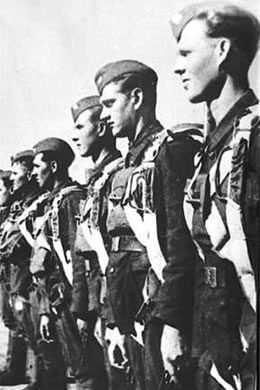
Picture 09: Russia, Yefremov, January- April 1944.
Soldiers of 2nd Czechoslovak Paradesant Brigade.

Picture 10: Russia, Yefremov, January- April 1944;
Woman - soldiers of 2nd Czechoslovak Paradesant Brigade.

Picture 11: Russia, Yefremov on April 22, 1944; after the Concluding Military Exercise of 2nd Czechoslovak Paradesant Brigade. Handover of “Paradesant Brigade Fighting Flag” by General Heliodor Pika (dispatched to Moscow as head of a military mission) to; Commander of 2nd Czechoslovak Paradesant Brigade; Lt/Colonel Vladimir Prikryl, Chief of Brigade Staff; Staff Captain/ Gen Staff Vilem Sacher (right), Chief of Brigade Operating Section; Captain Karel Hlasny (left)

Picture 12: Poland- Dukla Pass; the terrain near Zarzin village, September 1944;
From left; Staff Captain Hlasny, Lt/Colonel Prikryl and Major Mišin- „Russian attaché“ commanded by Soviet Union to the 2nd Czechoslovak Paradesant Brigade
NOTE to the Pictures 12 - 17; The direct liberation of Czechoslovakia started on September 8, 1944 by Carpatian (Dukla) Operation. Dukla Pass was 15 to 20 kilometers wide and 15 to 20 kilometers long. In addition to heavily defending it with armor, infantry and artillery, the Germans had planted thousands of land mines. The battles at Dukla Pass belong to the hardest military operations of the Czechoslovak units which took part in World War II.
On September, 12; 2nd Czechoslovak paradesant brigade joined combats in Carpathian Mountains (Poland). Aside from absence of heavy weapons brigade successfully, fought next seven days- to September, 19. Paradesants after hard fighting occupied town Besko... and other areas at Dukla Pass, and aided the 1st Ukrainian Front 38th army in transferring the main attack from the center to the left wing opposite enemy forces concentrated at Dukla Pass.

Picture 13: Poland- Dukla Pass; the terrain near Zarzin village, September 1944;
From right; Staff Captain Hlasny, Lt/Colonel Prikryl and Major Mišin

Picture 14: Poland- Dukla Pass; Staff of 2nd Czechoslovak Paradesant Brigade in Zarzin village, September 1944;
Staff Captain Karel Hlasny and commander of the 2nd Paradesant Batallion Major Frantisek Voves (left) with a Russian officer (right), before the „ Besko Battle“
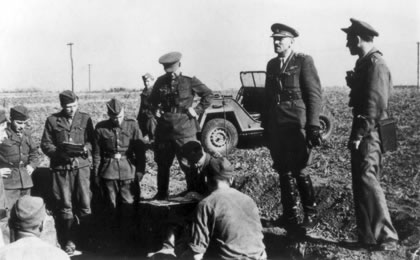
Picture 15: Poland- Dukla Pass, terrain near town Besko, September 1944
From right; Staff Captain Hlasny (speeking), Lt/Colonel Prikryl, Major Misin and other officers from paradesant brigade.
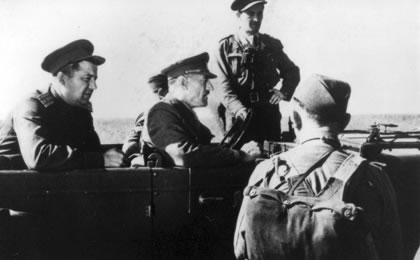
Picture 16: Poland - Dukla Pass, terrain near town Besko, September 1944;
From left; Major Misin, Lt/Colonel Prikryl and Staff Captain Hlasny
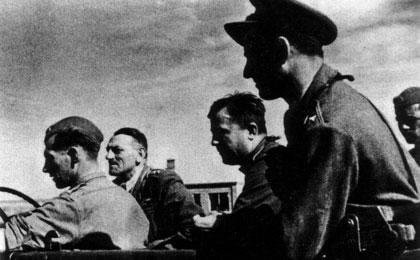
Picture 17: Poland- Dukla Pass, terrain near town Besko, September 1944;
From right; Staff Captain Hlasny, Major Misin, Lt/Colonel Prikryl and driver
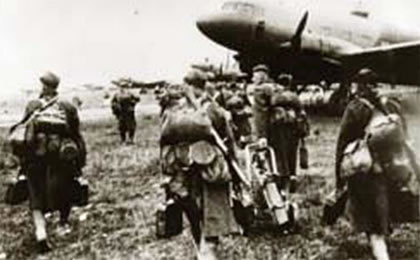
Picture 18: Poland, Kroscienko Airport, September- October 1944 Movement of paradesant brigade from Poland to Slovakia. There it was by air transported 1739 paradesant- soldiers, including 365 tonnes of military material.
NOTE to the Pictures 18 and 19; After hard fighting in the Carpathian foothills, the 2nd Paradesant Brigade was grouped in Kroscienko near Krosno (September 22, 1944) to prepare for transport to Slovakia. The Soviets had planned to move the brigade by air across the mountains to Slovakia (Slovak National Uprising), on September 18-21. Since the brigade only finished fighting on the 19th, commander Colonel Vladimir Prikryl asked for three days time for rest and regroupment before resuming operations. The weather was not conducive to the operation at this time either, but the Czechoslovak paratroopers were chafing for action and Colonel Prikryl could countenance delay no longer. So on September 25, 1944 there is the beginning of 2nd Paradesant Brigade transport from Kroscienk to insurgent territory. Colonel Vladimir Prikryl arrived to Slovakia and took over the command of 2nd Czechoslovak Paradesant Brigade in Slovakia. However, transportation of paradesant brigade to partisan territory was finished on October 15, 1944. Parts of this unit were sent to insurgent defence lines immediately as they arrived, and usually to most difficult combats (Slovak National Uprising).
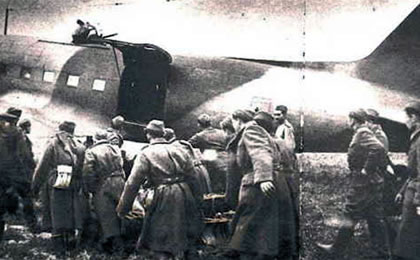
Picture 19: Poland, Kroscienko Airport, September- October 1944.
Movement of the 2nd Czechoslovak Paradesant Brigade to Slovakia.
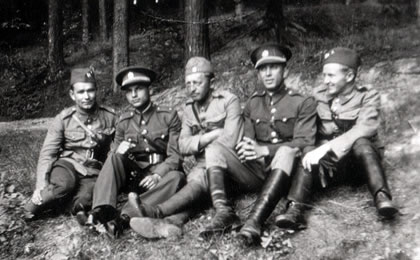
Picture 20: Slovak Republic, September 1944;
The group of Slovak partizan- soldiers; at the photo centre Karel´s older brother Lieutnant of the reserve Antonin Hlasny, with friends during Slovak National Uprising
NOTE to the Picture 20; On September 5, 1944; the first mobilisation announced by the Slovak National Council for men under 35 years. Number of Slovak soldier increased to 47.000 after this mobilisation. On September 26, 1944; the Slovak National Council announced second mobilisation for five age groups. Number of insurgents increased to 60.000 soldiers after this second mobilisation.
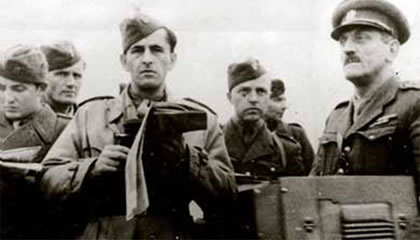
Picture 21: Slovak Republic, Staff of 2nd Czechoslovak Paradesant Brigade- military terrain recognition near to Ziar nad Hronom; October 10, 1944;
Staff Captain Karel Hlasny (in front), Colonel Vladimir Prikryl (right) and other officers of the paradesant brigade staff
NOTE to the Picture 21; 2nd Czechoslovak Paradesant Brigade attacked along a line from Trnava Hora to Jalna, supported by partisans attacking from Kloceny-Pitelna to prevent German units in Ziar nad Hronom from helping the defenders. Jalna was retaken on October 12. It was the last victory of the Slovak insurgents during the uprising.
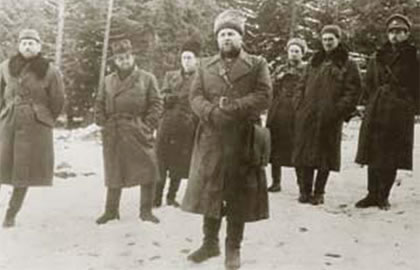
Picture 22: Slovak Republic, Low Tatras Mountains on November 7, 1944;
Speach or order of Colonel Asmolov standing in the front of partisan group of 100- 200 former soldiers, mostly from the 2nd Czechoslovak Paradesant Brigade From left; Colonel Prikryl, representative Lausman, Military Commissioner of paradesant brigade Michail Mojsejevic Glider, Major Skripka, representative Slansky and Staff Captain Karel Hlasny
NOTE to the Picture 22; On October 28, 1944 army units were supposed to form separate units, 2nd Czechoslovak Paradesant Brigade formed partisan groups on south and north parts of Prašivá mountain. Partisan groups should be formed out of 100-200 soldiers. At the meeting of political and military representatives of uprising at camp under Prašivá was decided to establish Main partisan headquarter as one an only organising and executive authority of partisan movement in Czechoslovakia.
After meeting of partisan headquarter and Colonel V. Přikryl it was decided to submit 2nd Czechoslovak Paradesant Brigade to partisan headquarter commanded by A.N. Asmolov. On October 29, 1944 the main partisan headquarter in Czechoslovakia was formed commanded by Colonel A.N. Asmolov.
The composition of „Main partisan headquarter;
(a) as military members; Colonel Alexej Nikitic Asmolov, Colonel Vladimir Prikryl, Major Ivan Ivanovic Skripka
(b) as political members; Karol Smidke, Jan Sverma, Rudolf Slansky as Czechoslovak Communist Party leaders, and Bohumil Lausman as Czechoslovak Social Democratic Party leader (see later; December 1953, Miroslav Nacvalac kidnapping operation in Austria about Bohumil Lausman).
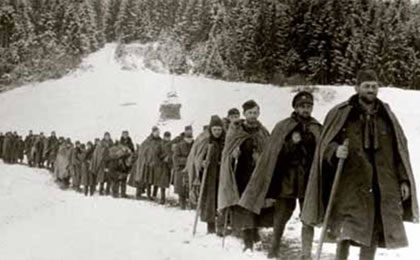
Picture 23: Slovak Republic, the terrain near to Lom Krpacovo in Low Tatras Mountains, November 15, 1944;
A part of the 2nd Czechoslovak Paradesant Brigade, military unit, walked in a long file, more than a hundred men, unshaven and bundled-up in long military coats. First walking man is commander Colonel Vladimir Prikryl, second man is Chief of Brigade Staff, Staff Captain Karel Hlasny.
NOTE to the Picture 23; On their troublesome way, exposed to rains and snow blizzards for days, the soldiers had been stumbling through deep snow in the Low Tatry Mountains. Without shelter and provisions, hungry and exhausted, some of them sick and troubled with frostbite; they finally came down to Krpacovo
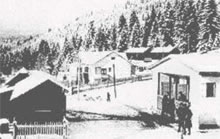
Picture 24: Slovak Republic, Lom Krpacovo in Low Tatras Mountains, November 15-30, 1944;
NOTE to the Picture 23 and 24; Lom was the name of the antimony mines enterprise, and Krpacovo was the name of the hill where the business was located. There was an administration building with some offices and quarters for Vaclav Marsalek, the engineer in charge. Most of the miners and workers had their families living in the valley, and would go home for the weekends. During the uprising, repression, and the German occupation afterwards, all work there had stopped, and the miners went home. The buildings were unoccupied. On September 15, a part of the 2nd Czechoslovak Paradesant Brigade came, and their commander, Colonel Prikryl, had asked Marsalek to provide them with a temporary shelter. He offered them housing in the vacant buildings, offices, barns and where ever they could find a place. The soldiers dispersed over the entire place. With their arrival, Krpacovo resembled a military camp with the civilians representing a miniscule minority. Together with the Paradesant Brigade an Anglo- American military mission descended from the mountains to Krpacovo.
In the early morning hours, on November 30, 1944, one company of SS men armed with heavy machine-guns and other weapons of destruction arrived at Krpacovo in Low Tatras Mountains. Our soldiers- partisans were not prepared for the attack. Staff Captain Karel Hlasny who had been seriously wounted in the crossfire. Karel was wounded with German explosive rounds, called dum-dums. He had been shot twice, once in the left forearm, and again in the lower part of his abdomen, also on the left side.
Among the caregivers, there at first was young girl Eva Marholdova (later in California Karel´s wife). The patient was introduced to Eva by his real name- Karel Hlasny. He told Eva that he was from a small town, Bludov in Moravia, where his parents, siblings and other members of his family still lived. He had not seen them nor heard from them for five years, since leaving the country and going to war...
Dr. Alexander Rehak from the paradesant brigade came to see the patient. He was quite concerned about his condition, especially the high fever. He gave him some sulphonamides, orally, and sprinkled some more on his wounds. The doctor insisted the patient had to be transported to a hospital in Podbrezova - otherwise he would not survive...
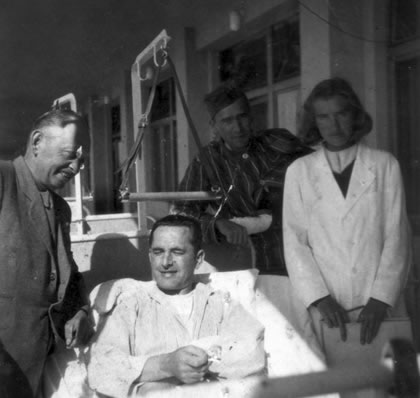
Picture 25: Slovak Republic; Military Hospital in Vysne Hagy (Tatras Mountains), March 1945;
Patient Major Karel Hlasny and visiting him his older brother Antonin Hlasny(Tonik)
NOTE to the Picture 25; Karel Hlasny was seriously wounded, however, the transport to hospital in Podbrezova; this was going to be quite a difficult task. First, he had to change his identity - a false identification card as Andrej Bognar. It was produced a false document with the picture of the patient pasted on it.
The Podbrezova hospital had been taken over by German doctors who used facility to treat their own wounded soldiers. Only one small wing of the hospital was left for the treatment of the local population, and young Czech doctor Robert Krystek was in charge of it.
On December 5, 1944, Joe Ziak started to prepare the patient for the hospital-trip. He dressed Karal in civilian clothes and put him on a horse drawn sleigh, and covered him with blankets. At dusk, Joe took of with the patient. It was about 15 miles (24 kilometres) to Podbrezova, passing through three villages in the valley. Of course, the Germans occupied the villages.
There, marshal law was enforced under which people should not be out after dark. Our travelers were stopped by a German patrol. Joe, in his broken German, told them he was taking a very sick person to the hospital in a hurry. They arrieved at Podbrezova in the late evening hours and Joe unloaded the patient at the private quarters of Dr.Krystek.
The doctor realized the patient needed immediate treatment. They laid him on a kitchen table in his apartment. The doctor operated on him with the assistence of his wife without any anesthetics. He gave him some „Slivovica“ alcohol to drink. The patient was so weak he passed out very shortly. Dr.Krystek kept the patient in his apartment for several days before he could find a safe place for him in the hospital. At least the pneumonia and high fever had ceased. Treating the deep infected wounds would require more time.
Dr.Krystek kept the patient at his own risk in the hospital occupied by Germans for three months, until the liberation of Podbrezova (March 8, 1945) by the Russian Army. It was not an easy task for the doctor. He kept moving the patient around from room to room. At one time, when the patient was able to walk, he put him in a room with small children. When some parents started asking about „Uncle Andrew“ the doctor moved Karel into a quarantine room, and put a „Typhoid sign“ on the door.
It was then that the Gestapo came to the hospital and told Dr.Krystek they knew he was hiding an insurgent soldier. They conducted their inspection walking from room to room. When the patient called „Andrew“ heard the thumping of their boots in the hallway, he hid behind the door of the room. The Gestapo saw the Typhoid sign. They did not even open the door; instead they just walked away. The doctor and the patient were quite relieved. The consequence of that encounter could have been fatal for both of them. A few days later, the Gestapo came back, and asked Dr.Krystek to surrender the patient. The doctor told them the patient had died the previous night, and they could get him from the morgue.
By the end of February, just before the liberation, the Germans evacuated their patients from the hospital and retreated. Now Karel, the patient was able to come out of hiding, being free to use his own name again. Doctor Krystek was aware Karel´s wounds did not heal properly. On his forearm the palm size scar was pushed deep into the muscle. The radial artery and nerves were ingrown in the scar causing impaired circulation and numbness of his left hand. From the wound in the lower abdomen, where his pelvic bone had been shattered, fragments of the bone were still coming out with pus. Yet, the hospital in Podbrezova was not equipped for the necessary delicate surgeries. They did not even have x-ray equipment there.
After the liberation of the Low Tatras area, Dr.Krystek immediately arranged for transfer of Karel to a major modern military hospital in Vysne Hagy that was staffed with very good surgeons (Major Dr.Skvaril…). There he could receive special care and undergo corrective surgeries. The brave Dr.Krystek had saved his life. After the end of the war he would be decorated with a medal for valor (Czechoslovak War Cross from 1939). Also by the same medal was decorated Joe Ziak.
1945 – 1947;
Major Karel Hlasny spent a few months in the hospital, and in the meantime the war was over. In the summer of 1945 he was promoted to the rank of Lt/Colonel in Prague. When he recovered, he concluded studies at the War College in Prague, and afterwards he was appointed Chief of Staff of the 1st Armored Division in Prague with the rank of Gen Staff Lt/ Colonel. On December 13, 1947 he was relieved of his functions by the Communist controlled Defensive Intelligence Service and a warrant for his arrest was issued, because he accidently said among the officers that in Russia is no democracy but only terror and that he had no intention to fight against Western Democracies. At the same time the commander of 1st Armored Division in Prague- General Jaroslav Broz (also from England) – was „quickly pensioned“. So before the „ February-Revolution“ – this only Prague armored division- was commanded by „communist officers“.
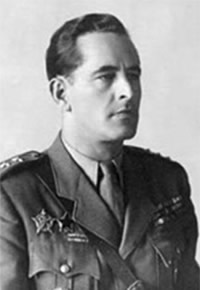
Picture 26: Lt/Colonel of General Staff Karel Hlasny as Chief of Staff of the 1st Armored Division in Prague (Smichov)- to the end of 1946
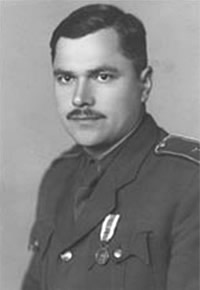
Picture 27: Czechoslovakia, Ministry of Defense in Prague, 1947
Staff Captain Alois Řežucha (1910- 1981)
NOTE to the Picture 27; Alois Řežucha was the best Karel´s friend; from Primary school in Bludov to the Karel´s escape from Czechoslovakia, in November 1948. As an officer of the Ministry of Defense in Prague (1945 - 1949); he importantly helped about the escape of two General Staff officers; Colonel Alois Hak and Lt/ Colonel Karel Hlasny. Alois Řežucha and Karel Hlasny, both were from family with five children, their parents were so poor that they could not afford their study at High School (Real Gymnasium) in Sumperk, where they graduated in 1929. So Alois and Karel worked during their vacations and within other free time; with Karel´s father master-bricklayer Antonin Hlasny; about build some new buildings in Sumperk. Only Alois and Karel, both born in Bludov, graduated at the Military Academy in Hranice, from „Bludov citizenry“.
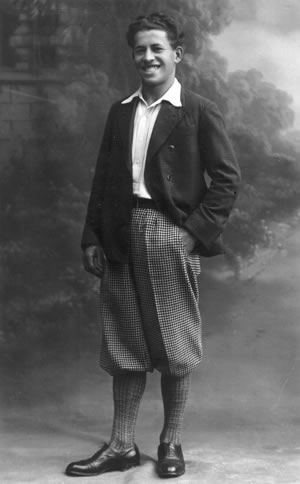
Picture 28: Czechoslovakia, Bludov, 1948;
Josef Hlasny (1914- 1996), my father, younger Karel´s brother.
NOTE to the Picture 28; Our family lived in Karel´s birth-house in Bludov with Karel´s mother Anna Hlasny (1876- 1953) and Karel´s father Antonin Hlasny (1871- 1956). In the last weekend of September 1948 Karel went Bludov for a reunion with his family, parents, brother and a sister. Karel tried to be cheerful. He never talked with his elderly parents about his troubles and intentions to leave Czechoslovakia. That was the last time he would ever see his family...
1948;
Thanks to his friends in the Army and his war record, he escaped punishment by the Supreme Military Court but he was persecuted in various other ways. Finally, he successfully escaped from Czechoslovakia and reached US Zone of Germany in November 1948.
1949;
During his stay in the US Zone of Germany he was employed by the IRO (International Refuges Organization) and for about 5 months by the American Military Government Authorities.
1950- 1951;
He reached Australia on January 30, 1950. There he worked for about 4 months in an engineering factory as a laborer, and since then as an accountant with a manufacturing firm in Adelaide, South Australia. Since April 1951 he have been with a motor car distribution firm in Sydney.
1951 – 1952;
From december 1951 to August 1952, he worked as bookkeeper and supply- administrator for a large ranch of nearly 2 million acres, having 90,000 sheep and 30,000 cattle, in N.W. Queensland. On August 29, 1952 he left Australia by airplane and flew to Honolulu, TH, where he was addmitted as a permanent resident of the US, on August 30, 1952.
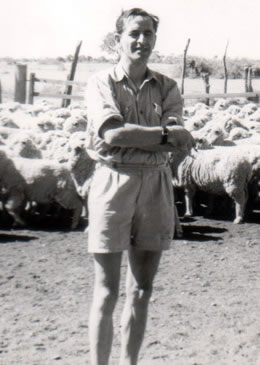
Picture 29: Australia, Queensland; From December 1951 to June 1952.
Cloncurry Council Area, The Ardmore sheep station in Dajarra. There they held about a hundred thousand sheep, raised for wool, and about twenty thousand cattle and horses,
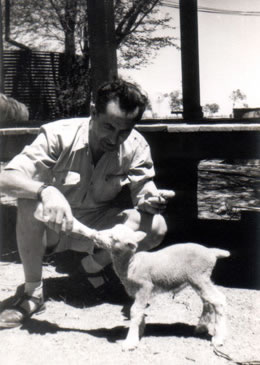
Picture 30: Australia, Queensland; From December 1951 to June 1952.
Cloncurry Council Area, The Ardmore sheep station in Dajarra.
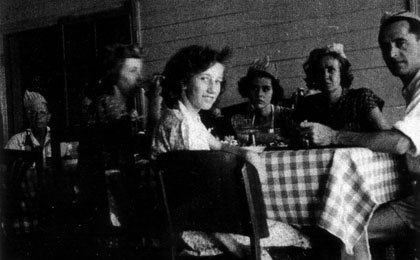
Picture 31: Australia, Queensland; From December 1951 to June 1952.
Karel Hlasny and people of the Ardmore sheep station in Dajarra.
1952 - 1979;
From September 8, 1952 he have served under Civil Service as an Instructor in Foreign Languages at the Army Languague School (later; Defense Languague Institute), Presidio of Monterey, California.
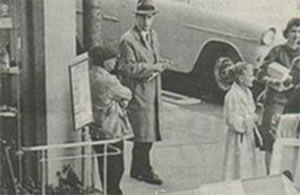
Picture 32: California, San Francisco; November 14, 1959;
Miroslav Nacvalac (right) and Karel Hlasny (left) at the Milton Kreis restaurant at the corner of Union Square.
NOTE to the Picture 32; Miroslav Nacvalac (Major of KGB ) was known to the United States Government as Cliief of Czechoslovak Civilian Intelligence Operations in the United States and has a long background in Czechoslovak intelligence work. Mr. Nacvalac arrived in the United States on July 8, 1958, as a member of the Permanent Mission of Czechoslovakia to the United Nations. As of June 13, 1961, he was Counselor of that Delegation. He had earlier been in the United States as "an inspector" and as a member of the Czechoslovak Delegation to the United Nations General Assembly.
On November 3, 1958, Mr. Nacvalac travelled from New York City to pay a secret visit to Mr. Karel Hlasny, a language instructor of the Army Language School in Monterey, California. Mr. Nacvalac solicited the cooperation of Mr. Hlasny in return for an exit permit for Mr. Hlasny's fiancee, who was then in Czechoslovakia. Mr. Nacvalac informed Mr. Hlasny of code signals to be utilized in arranging future meetings, emphasizing the need for absolute secrecy. Later, Mr. Nacvalac was particularly interested in the identities of government employees attending the Army Language School and information concerning any character weaknesses that they might possess.
On November 14, 1959, Mr. Nacvalac met Mr. Hlasny at San Francisco, California, by prearrangement, paid him $500, and received information from Mr. Hlasny. Later repeatedly, on April 2, 1960, Mr. Nacvalac met Mr. Hlasny at San Francisco, California, in furtherance of this espionage operation.
The action of the United States in requesting Mr. Nacvalac's immediate departure was based on his higlily improper activities heretofore cited which had no relationship with his duties as a member of the Permanent Delegation to the United Nations.
Mr. Nacvalac's activities clearly constitute an abuse of his privileges of residence. In view of the fact tlmt communications to the United Nations from the Czechoslovak Permanent Mission dated June 16, 1961, and June 19, 1961, on this subject have been circulated by the United Nations pursuant to the request of the Czechoslovak Permanent Mission, the United States Mission requests that this note be circulated to all Members of the United Nations. Circulation of its note to the Czechoslovak Permanent Mission, dated June 13, 1961.
The Nacvalač spy case was widely publicized all over the United States and Western Europe. For few days, cameras and television reporters seeking an interview with Karel Hlasny. The Commandant of the Army Language School, Colonel James Collins gave Karel a scrapbook containing a collection of newspaper clippings from the local paper all the way to papers in Washington DC. He also enclosed his personal letter of appreciation for the job well done. Congressman Teague, the State Department, and the Assistant Director of the FBI who wrote, „You had done a marvelous job under extreme pressure, and can be proud of the great contribution you have made to this country“ also praised Karel.
Miroslav Nacvalac returned to Czechoslovakia; defeated and discredited for future foreign service. A few years later he died in Prague (as „Colonel of KGB“) in a car accident officially reported as driving under the influence of alcohol.
However, KGB (StB) Lt/Colonel Miroslav Nacvalac, previously (to 1958) as chief of Czechoslovak Embassy in Vienna, he is also well known about one kidnapping operation in Austria. Most Czech and Slovak émigrés abroad recognised the risk but some, including former Czechoslovak Social Democratic Party leader Bohumil Lausman - underestimated the StB's audacity and reach. The former Social Democratic Party leader who had stayed on as deputy prime minister following the fateful communist takeover before finally fleeing, was abducted in December 1953.
This abduction was provided by three StB austrian´s agents, commanded by Miroslav Nacvalac (http://www.blansko.cz/clanky/07/01/rudolf-barak-kariera-pad.php)! Many émigrés put distance between themselves and Czechoslovakia but not everyone was fully aware of the danger. Bohumil Lausman is probably the most publicised example: he lived practically alone in Salzburg and was an easy target.
Lausman's was a classic kidnapping like you'd see on TV or in the movies: they quietly slipped drugs into his drink and he was bundled into a diplomatic car and taken through Vienna and then onto communist Czechoslovakia. Diplomatic immunity was of course abused. Mr Lausman was subjected to interrogation including the threat of psychological or physical torture. Lausman (1903- 1963) received a lengthy prison sentence and was never freed again: he died behind bars under mysterious circumstances on May 9, 1963 (on Czechoslovak „WWII Victory Day“ http://zpravy.idnes.cz/nova-zbran-rozvedky-unos-0hl-/vedatech.asp?c=A020425_121928_vedatech_jan ).
However, Bohumil Lausman was a „partisan member“ of the 2nd Czechoslovak Paradesant Brigade, operating in Slovak Tatras, during Slovak National Uprising. In 1940 he helped organize the Prague anti-Nazi underground, escaping to London just a jump ahead of the Gestapo; in 1944 he parachuted into Slovakia to lead the abortive Banska Bystrica partisan rising. According to the daughter of Brigade General Vladimir Prikryl, Lausman was also a Karel´s friend.
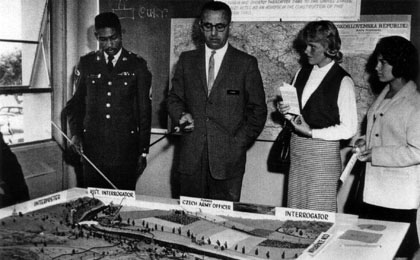
Picture 33: California, Monterey, Army Language School, 1960s
Karel Hlasny former regular officer of Czechoslovak Military Forces, now a language instructor of the Army Language School in Monterey.
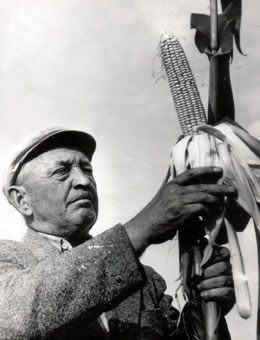
Picture 34: Czechoslovakia, Ivanka pri Dunaji, September 1961
Karel´s older brother (1901- 1979) agronomist Antonin Hlasny; there he received Medal “Work Order” (May 1961) from the former prime minister Viliam Siroky; about the highest corn harvest in Czechoslovakia. However, after “Nacvalac espionage scandal”, Antonin Hlasny agronomist job was finished to the end of 1961.
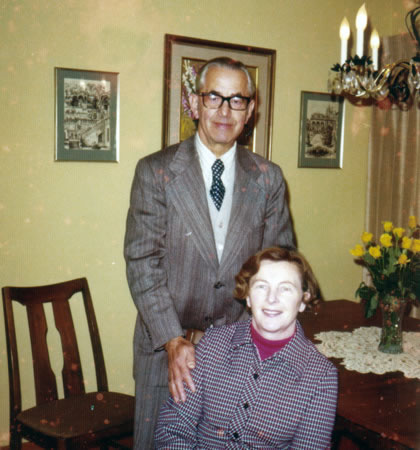
Picture 35: California, Monterey, 1970s
Eva and Karel Hlasny
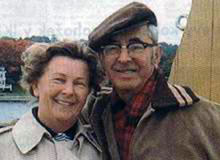
Picture 36: California, Monterey, 1970s
Eva and Karel Hlasny

Picture 37: California, Monterey, 1970s
Eva and Karel Hlasny
NOTE to the Picture 37; There are some memory- words of Bill Lamb,student from Army Language School in Monterey; „My class main instructor and his wife; His name was Karel Hlasny pictured with his wife Eva at the class picnic in 1973. Now deceased, he was a nice guy, WWII veteran and tolerated far too much nonsense from us. His wife occasionally taught a period or two of our class. I think he said he was regular Army, mayby a colonel, when the war broke out. I don´t recall how, or even if he ever said how he ended up in the U.S.“
NOTE to the Picture 35 and 37; As instructor of the Army Language School in Monterey, Karel Hlasny was overwhelmed by the opportunity to teach the American soldiers Czech, and to be able to use his military knowledge and experience in the US. Being an unwilling bachelor for many years he wanted to get married and have his own family. He devoted his concentrated efforts on getting Eva Marholdova out of Czechoslovakia to join him in the USA. Remember, this girl born in Prague (1926) was at first among caregivers after his serious wounding in Slovak Low Tatras on November 30, 1944. That was a very difficult task. As he had left Czechoslovakia illegally, the communists considered him a deserter or traitor.
For many years keeping in touch just by correspondence both Karel and Eva had longed to be together. All attempts to get an immigration visa from Czechoslovakia to the USA were denied and abruptly canceled. As there was no legal way to get out, Karel considered some illegal ways to smuggle Eva Marholdova from Czechoslovakia. He sought advice from many of his friends in various parts of the world, especially those in England. There was no easy solution. With the communists having tight control over their citizens, and the borders closely watched, in the fifties it was almost impossible to escape.
In 1957, after spending five years in the United States, Karel was eligible to become a US citizen. Once he became a US citizen he stirred-up the waters to get Eva out legally. He wrote petitions for help and intervention in his case to the US Congress, Department of State and the American Embassy in Prague. There was a new military attaché, Col.Frank Devlin, a former student of Karel´s at Army Language School in Monterey. He also wrote a long letter to the UPI (United Press International) staff correspondent, C.H.McCann, in New York, about the „Eva“. Action. In October 1958 the American Consul General in Prague informed Congressman Teague that Eva Marholdova might obtain the immigration visa at one of the American Consulates in Germany asssuming she was permitted to leave Czechoslovakia. I would get a non-quota visa and might readily travel to the United States to be married there.
However, there was the failure of that operation, and later; only „Nacvalac espionage story“ it was instrumental for Eva coming to the USA. Karel´s demands for Eva release from the Czechoslovakia presented to Nacvalač at their May 28, 1959 meeting in Monterey had contributed to the issuance of the exit permit in June. In July 1959 the American Embassy in Prague informed Eva that her petition for an Immigration visa was transferred to the American Embassy in Munich with recommendation for immediate action. So Eva Marholdova could leave Czechoslovakia, and she landed in San Francisco airport on August 14, 1959. http://zpravy.idnes.cz/vedatech.asp?r=vedatech&c=A020520_115606_vedatech_jan&r2=vedatech
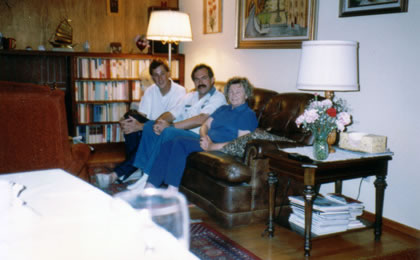
Picture 38: California, Monterey, September 1991
From right; Karel´s wife Eva Hlasny, Karel´s nephew Dr Josef Hlasny from Bludov, and Karel´s son Tom Hlasny
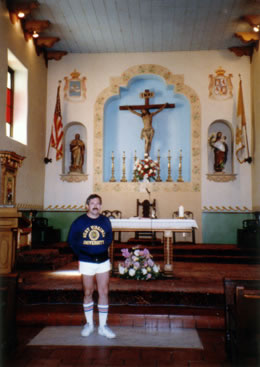
Picture 39: California, Monterey, San Carlos Cathedral, September 1991;
My photo (Josef Hlasny, DVM, PhD),
NOTE to the Picture 39;There Karel Hlasny and Eva Marholdova were married on August 22, 1959 by Father Ryan, a conservative Catholic priest of Irish origin. I was first visiting member of “Hlasny family” from Czechoslovakia in Monterey.
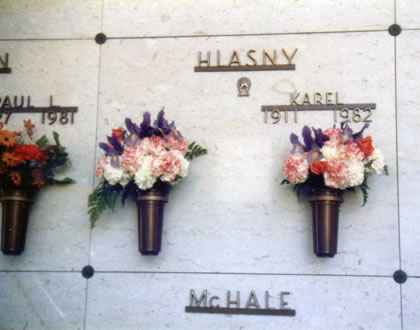
Picture 40: California, Monterey Cemetery, September 1991.
The grave of Karel Hlasny (1911- 1982).
Další související odkazy:
MVDr. Josef Hlásný, CSc.












































